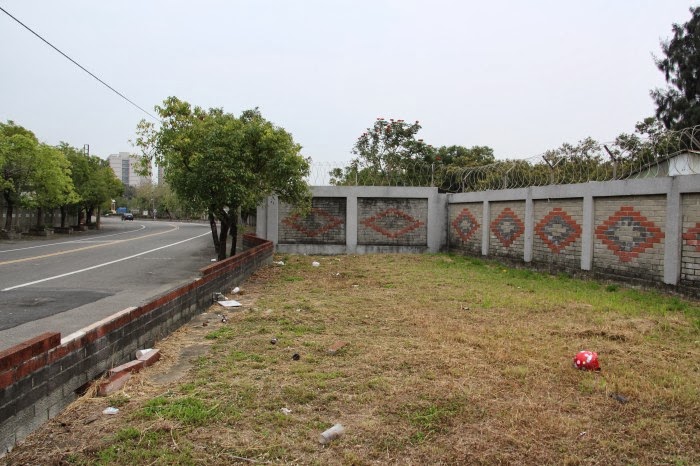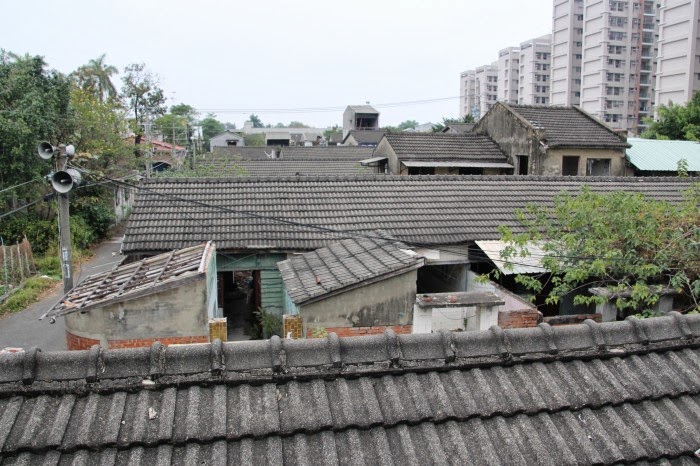Keelung must save iconic wharves
By Hung Chih-wen 洪致文
Translated by Julian Clegg
http://www.taipeitimes.com/News/editorials/archives/2014/02/18/2003583759
After Dutch artist Florentijn Hofman’s giant Rubber Duck bid farewell to
Keelung Harbor a few days ago, a group concerned with the city’s
culture and history gathered at the port’s No. 2 and No. 3 West
warehouses in the cold weather to protest against the city government’s
plans to demolish these two historically valuable buildings.
The
city will hand the area over to the port’s management company, Taiwan
International Ports Corp (TIPC), which will build a new cruise terminal.
The protest caused a standoff with police and represents one of many
conflicts over the preservation of Taiwan’s cultural heritage.
Any
government should be responsible for protecting important cultural
heritage. However, whether it be the Puantang (普安堂) lay Buddhist
monastery in New Taipei City (新北市) or the Keelung wharves, local
governments complete ignore culture and care only about development and
commercial profit. In addition, destroying such precious cultural
heritage while dispatching police is the kind of behavior that one would
expect in more savage and uncivilized countries.
These are the
only warehouses in the port remaining from the Japanese colonial era.
The buildings witnessed Keelung Port’s rise in importance during the
Japanese period, the arrival of the Chinese Nationalist Party (KMT)
government after its retreat to Taiwan, Taiwan’s economic takeoff and
the recent delivery of Taiwan Railway Administration’s Puyuma Express trains.
While
the buildings’ exteriors may not seem spectacular, their interior steel
frames show industrial technology from the 1930s which, coupled with
the memories of those who arrived in Taiwan for the first time in 1949
at the port, makes these buildings important to our heritage and worthy
of preservation.
However, in the name of development, the Keelung
City Government used its Cultural Affairs Bureau to find a legal way of
establishing that the area lacks “cultural value” before handing it
over to the TIPC, which plans to replace the buildings with a cruise
terminal and other facilities.
Shockingly, the Cultural Affairs
Bureau said that incorporating five sets of original steel girders into
the new structures would provide sufficient symbolism.
When
excavators move in to tear the buildings down, the government and the
TIPC will say that the job has already been contracted out and cannot be
halted. However, there have been many examples of demolitions being
stopped after contracts were issued. For example, the current site of
the Directorate-General of Highways in Taipei had been signed over for
demolition, but the tear-down was halted and the building eventually
preserved as a historical site.
The Keelung City Government has
also said that preserving old warehouses gets in the way of development
and commerce. However, there are many examples of warehouses overseas
that are preserved and turned into world-class tourist attractions. For
example, the warehouses at Otaru Port in Japan’s Hokkaido bring in a
great deal of commercial revenue each year, while the warehouses at
Maizuru Harbor in Kyoto Prefecture are not only a cultural asset, but
the entire area has historical significance and is full of memories
about people who moved after World War II. This is precisely why this
harbor is currently applying for UNESCO World Heritage status.
Keelung
boasts lots of cultural heritage. Destroying it in the name of
development is outright stupid. If the people of Keelung do not wake up
before the elections and vote out this thoughtless and crude regime, it
will be impossible to preserve the city’s culture and history.
Hung Chih-wen is a professor of geography at National Taiwan Normal University.
Translated by Drew Cameron 英文台北時報(Taipei Times)

































































